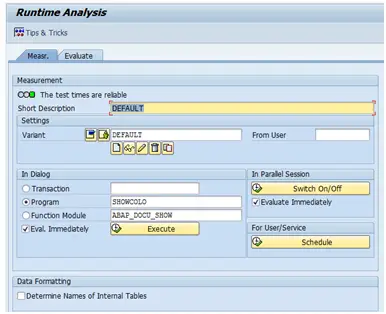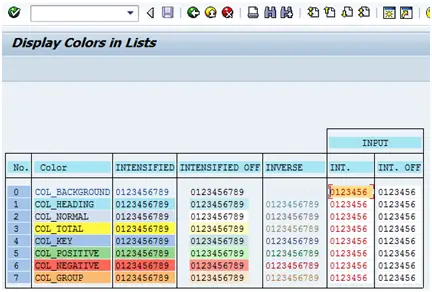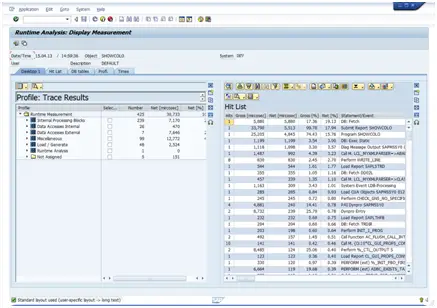Improve ABAP performance with the runtime analysis tcode SAT (SE30)"
This is a quick tutorial to help you become familiar with the SAP runtime analysis transaction SAT which can help you look at the
performance of your ABAP code and see where any potential problem are. The following example shows you how to analyze any ABAP
report/program but as you can see there are also options to look at a function module or transaction. Basically you enter the report
or other object you want to evaluate and press the execute button, the report will then be executed as normal but when you then leave
the runtime analysis screen will be displayed for you to examine.
Step 1 - Execute transction SAT
Execute transaction SAT which is the new version of SE30(you could use SE30 instead if you wanted but is out of date now).

Step 2 - Perform runtim analysis
Select the program radio button option and enter a report you want to analyze. Now press the execute button and process the program
as you would normaly. I have used the SAP standard report SHOWCOLO which displays a simple report to the user.

Step 3 - View runtime analysis details
Now exit the report by pressing the back, exit or cancel button, a new screen should be displayed showing performance figures for all aspects
of the report including execution time for processing blocks such as performs, function modules, methods, modules etc, data retrieval times,
a list of tables accessed and much more.

Related Articles
ABAP Performance Improvements - Example code and information on various performance enhancements
Performance tuning using GROUPBY
Improving the performance of your ABAP internal table processing
ABAP Parallel cursor to improve Performance of your SAP reports
Switch on RTA Dynamically within ABAP Code
Using the Runtime Analysis tool, both manually and from with a program
SAP SQL Trace
Compare performance of various ABAP code using runtime analysis tcode SAT '
